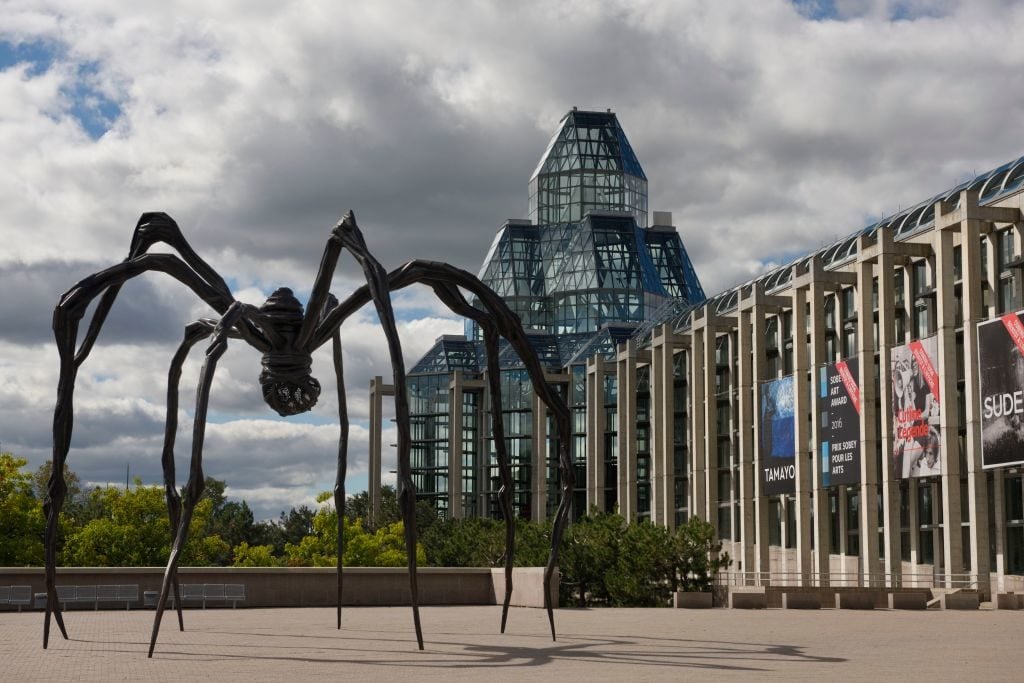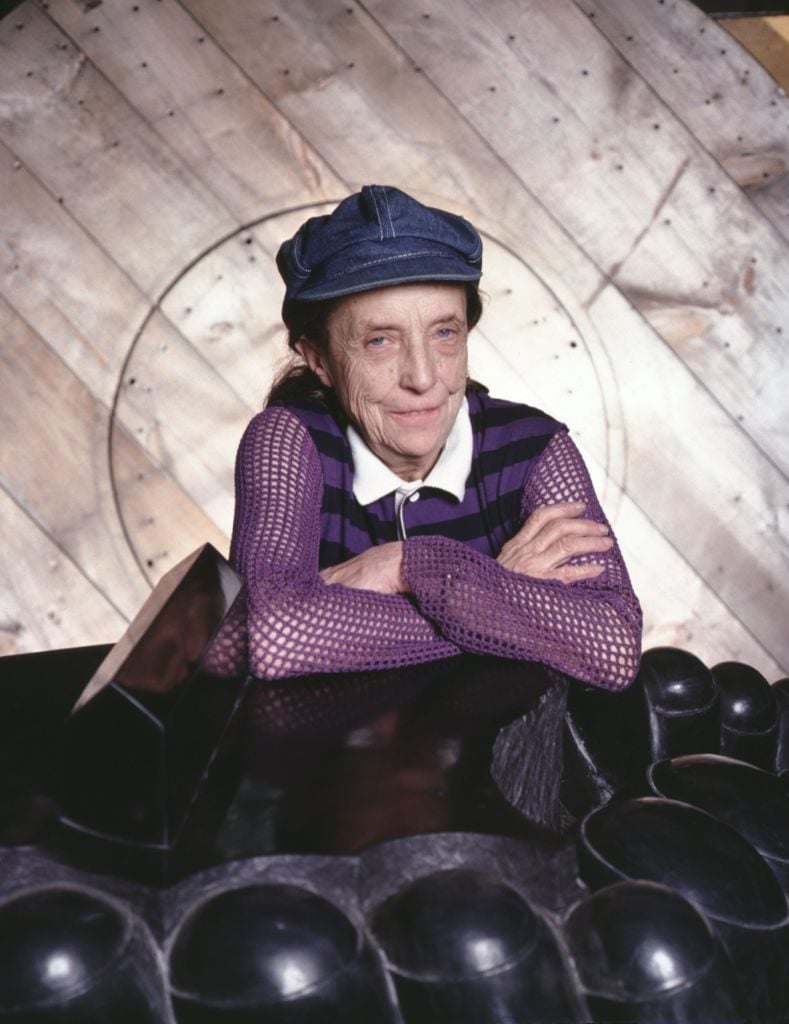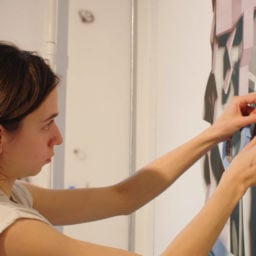The late artist Louise Bourgeois underwent years of psychoanalysis in the Freudian method. Looking at any one of her works, it’s easy to see that she was profoundly influenced by her experience.
A show at the Jewish Museum in New York takes Bourgeois’s analysis as a jumping off point for the exhibition “Louise Bourgeois: Freud’s Daughter,” which features many artworks alongside the artist’s personal writings reflecting on her treatment. Bourgeois famously called art her “guarantee of sanity,” and it was through her art making that she made sense of the world around her, and her place within it.
In an exclusive interview filmed as part of Art21’s first season of Art in the Twenty-First Century back in 2001, before the artist’s death, Bourgeois spoke about some of the universal themes she addressed by delving into her own history—what she called “autobiographique”—for source material.

The National Gallery of Canada in Ottawa. Photo by Education Images/Universal Images Group via Getty Images.
Explaining a cast sculpture of two sets of hands, one seeming to belong to a child and the other, larger pair belonging to an adult, Bourgeois said it represented “the helplessness of a child and… the help that the grownup can give a small child. One takes care of the other.”
In her usually self-reflective manner, she adds, “Helplessness can be a charm, it makes you feel good to help with somebody helpless, even though it’s arrogant to say that.”
Bourgeois was deeply influenced by surrealism. She infused her personal experiences of familial anguish and sexuality into her work using evocative materials like rubber, bronze, and textiles. Many of Bourgeois’s most famous works, like her massive bronze spiders, titled Maman, nod to her own mother and other relatives who worked with tapestry, and as lace-makers. Bourgeois, though, “never sat at a loom” though many of her works incorporate woven materials and other crafts.
“A work of art doesn’t have to be explained,” Bourgeois says. “If you do not have any feeling about this, I cannot explain it to you. If this doesn’t touch you, I have failed.”
Watch the video, which originally appeared as part of Art21’s Art in the Twenty-First Century series, below. “Louise Bourgeois, Freud’s Daughter” is on view at the Jewish Museum through September 12, 2021.
This is an installment of “Art on Video,” a collaboration between Artnet News and Art21 that brings you clips of newsmaking artists. A new series of the nonprofit Art21’s flagship series Art in the Twenty-First Century is available now on PBS. Catch all episodes of other series like New York Close Up and Extended Play and learn about the organization’s educational programs at Art21.org
Follow Artnet News on Facebook:
Want to stay ahead of the art world? Subscribe to our newsletter to get the breaking news, eye-opening interviews, and incisive critical takes that drive the conversation forward.









